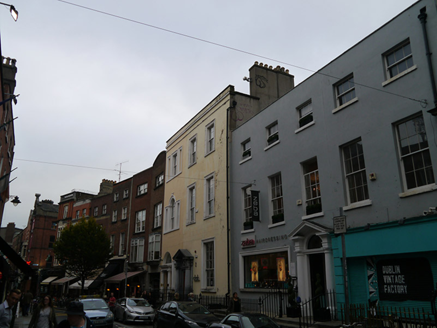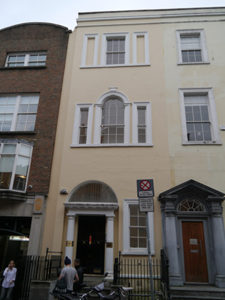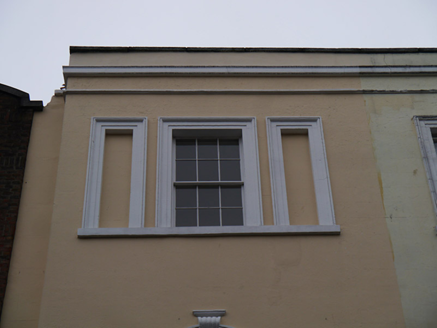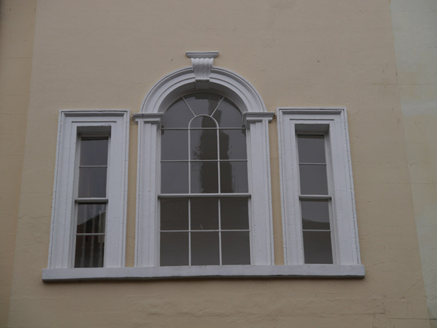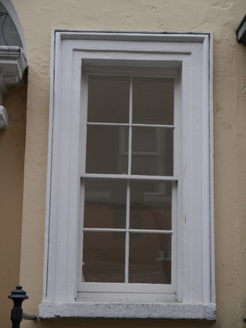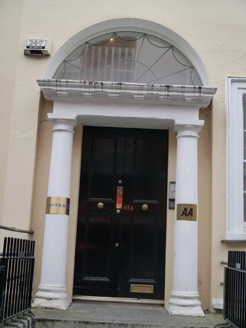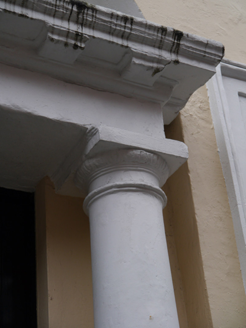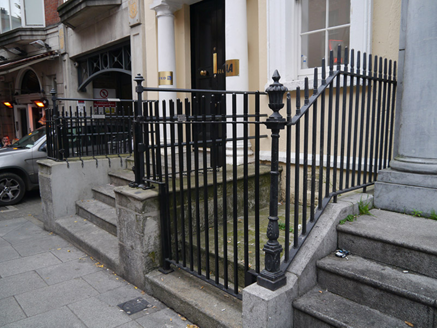Survey Data
Reg No
50910083
Rating
Regional
Categories of Special Interest
Architectural, Artistic
Original Use
House
In Use As
Office
Date
1760 - 1770
Coordinates
315808, 233876
Date Recorded
13/11/2015
Date Updated
--/--/--
Description
Attached single-bay three-storey former house, built c. 1765, formerly part of three-bay house, historically subdivided, having bowed rear (east) elevation with recent slate-clad attic storey. Now in use as offices. Pitched roof, hipped to rear, concealed behind rendered parapet with masonry coping over moulded cornice. Painted rendered walling. Square-headed window to top floor, flanked by blind sidelights, all having moulded surrounds and continuous sill; round-headed opening to first floor, having moulded imposts and scrolled fluted keystone, with glazed sidelights and otherwise similar details to those of top floor; and square-headed window to ground floor with masonry sill, all having timber sliding sash windows, six-over-six pane to upper floors, with two-over-two pane flanking lights to first floor, and four-over-four pane to ground floor. Round-headed door opening with Doric columns on plinth stops rising to plain frieze and modillioned cornice, with cobweb fanlight and four-panel timber door with brass furniture, opening onto granite platform with five steps to street. Cast-iron railings with ornate finials to corner posts to front of house.
Appraisal
This property was a part of a larger house, now divided into two separate units. The building, now in commercial use, retains the original doorcase, somewhat crowded by the doorcase that has been added to the adjoining section to facilitate subdivision. Its unusual proportions and details would suggest that it may originally have been a five-bay house with this building with its elegant Venetian window as the central bay. Notwithstanding the truncation of the house, it remains, along with its neighbour, one of the most impressive architectural features of South William Street. With its stucco frontage and subtle embellishment, it is one of the better examples of eighteenth-century architecture on this historic street and contributes significantly to its diversity.
